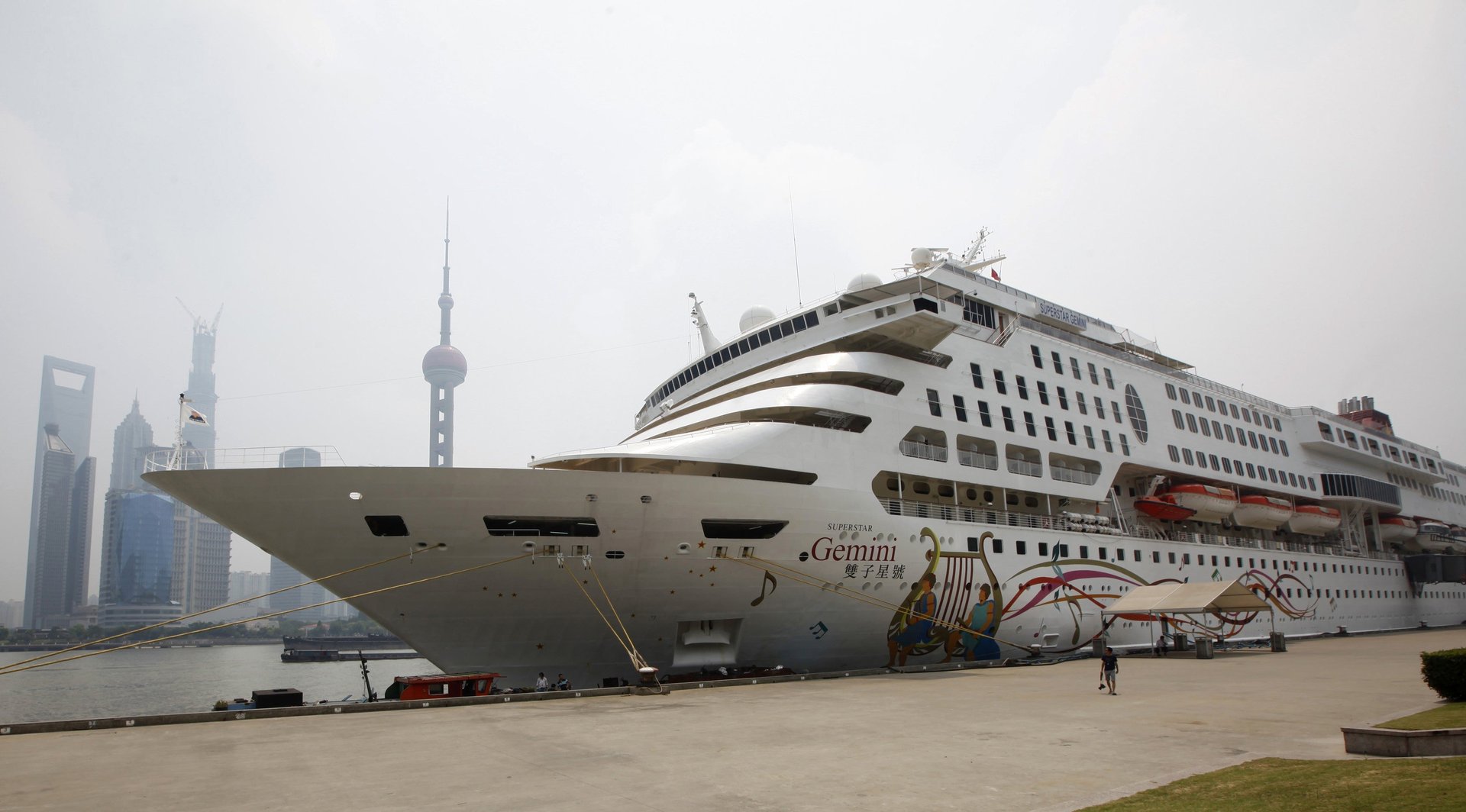Why the best cruise ships are in China
When Royal Caribbean’s newest cruise ship, the Ovation of the Seas, launches later this year, it will offer 4,000 passengers the option to ride bumper cars, try out simulated sky diving, and take in views from a boom that extends 300 feet above the ocean. But don’t expect to board this goliath in Miami or New York. The ship will spend the summer sailing in Europe before permanently joining Royal Caribbean’s fleet in east Asia, serving China and Hong Kong.


When Royal Caribbean’s newest cruise ship, the Ovation of the Seas, launches later this year, it will offer 4,000 passengers the option to ride bumper cars, try out simulated sky diving, and take in views from a boom that extends 300 feet above the ocean. But don’t expect to board this goliath in Miami or New York. The ship will spend the summer sailing in Europe before permanently joining Royal Caribbean’s fleet in east Asia, serving China and Hong Kong.
While the US cruise business is growing at a rate in the low single digits, demand in China has risen by double digits since 2013, making it the cruise industry’s fastest-growing market. China accounted for 1 million cruise passengers last year, up from about 700,000 in 2014. The Chinese Ministry of Tourism forecasts 4.5 million passengers by 2020.
The growth partly reflects the overall increase in the number of Chinese traveling outside the country.
But it also reflects a growing taste for higher-end options for leisure and entertainment, which the industry is eager to satisfy with vessels featuring rides, elaborate theatrical productions, and, on Ovation, 18 restaurants.
While Chinese passengers once might have settled for run-of-the-mill ships, they will no longer, says Adam Goldstein, Royal Caribbean’s president.
“Within China, there really is an expectation to have the best of everything,” he tells Quartz. “They feel they’ve waited long enough.”
China is already the largest market for luxury cars and smart phones, and will soon be No. 1 in beer. The power of its consumers is only expected to grow. One estimate shows Chinese consumers spending $6.4 trillion by 2025, a 70% increase over the next decade. Royal Caribbean’s efforts to tap into this growth is yet another example of the tastes and preferences of Chinese consumers shaping how goods are made and sold.
Chinese passengers tend to be younger than those in the US—40% are under 40—and they frequently travel with both their parents and children.
In China, cruise customers tend to view the excursions as opportunities to shop, Goldstein says, in part because, unlike airlines, there’s no fee for bringing back extra baggage.
But Chinese travelers also tend to prefer five- and six-night cruises, compared with Americans, who book for a week. Given the region’s geography, destinations on the shorter voyages are limited to Japan and Korea, Goldstein says. That lack of variety means there’s less reason to book a second or third trip. So Royal Caribbean is eager to tempt Chinese passengers away from malls and onto the cruise line’s cultural outings, to help convince them to take additional cruises to more far-flung destinations.
A cruise experience with all the latest bells and whistles is a big part of the sell. In the ’90s, Goldstein says, American cruise lines could send worn-out ships to Europe, because “Europeans didn’t know there was anything nicer.” But “one of the characteristics of marketing today is that everyone knows what is the greatest ships. It takes five minutes of research online.”
Because cruise ships are difficult and enormously expensive to build—Ovation of the Seas cost $1 billion—there are only a few shipyards in the world that can build them, and they’re fully committed until 2020. That means trading off older markets to meet the demand from China, or splitting ships between markets.
Royal Caribbean will have five ships serving China this year, and its larger rival, Carnival, will have six. Both companies are also forming joint ventures with Chinese companies to create new cruise lines.
Ultimately, as with many other industries, the Chinese government wants the country to be a producer as well as a consumer. To that end, CSSC, the state shipbuilding company, already has struck a deal with Carnival, and Fincantieri, an Italian ship builder, to help build what Carnival says will be “the first-ever, world-class cruise ship built in China.”